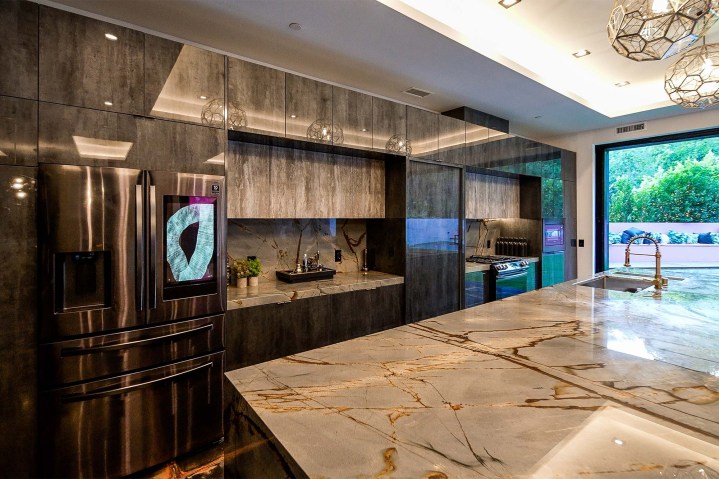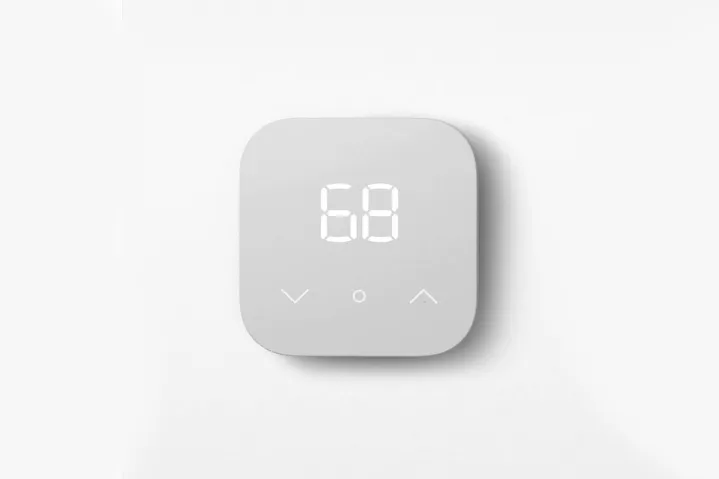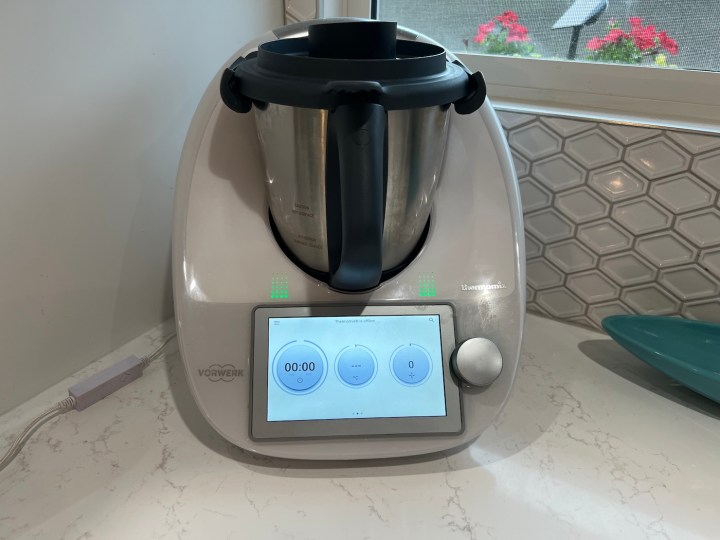Did you buy a smart home gadget in the last year? If you did, you’re part of a growing trend. The embracing of smart home technology is rising fast.
According to just one study, “The global smart home market is expected to grow from $99.89 billion in 2021 to $380.52 billion in 2028.” That’s a lot more smart speakers, wireless home alarms, smart plugs, and Wi-Fi-connected lights than ever before, and the smart kitchen segment of that market is set to grow by about 25% between now and 2023.

So what’s driving this heightened interest in the smart home, and what are we consumers looking for when we consider spending our hard-earned incomes on new smart home devices?
What’s driving the smart home? Security
We all want to feel safe in our homes and security is a core need in society. Whether we’ve got an eye to protecting a 75-inch OLED TV and full surround sound system, or we want to ensure our Google Nest Audio doesn’t walk away while we’re at work, everyone has stuff they want to protect. Increasingly, that’s translating to smart, do-it-yourself home security systems and remote wireless cameras.
Home security systems even 10 and 20 years ago used to be complicated and required advanced wiring, installation technicians, and bulky sensors plus expensive monthly monitoring.
Today, it couldn’t be easier to install a Wi-Fi-connected wireless home alarm system yourself — and the cost averages just a couple hundred dollars. Most of these home security systems, like Ring Alarm, are modular, allowing you to purchase only the components you need for the size of your space, and they also typically offer add-ons like glass break sensors, water and freeze sensors, plus cameras and video doorbells.

If you’ve ever had an Amazon package go missing from your doorstep, you know the feeling of unease that some jerk has taken something you paid for. That peace of mind from a simple doorbell camera can not only make you feel better and more secure, it can act as a crime deterrent, too.
What’s next? You may have already heard about Amazon’s foray into the next generation of this technology; the company announced the Astro roving robot that would become a de facto security guard, or perhaps you took note of the Ring Always Home patrol drone. These are real-world concepts that are on the cusp of being consumer ready.
Efficiency
Being environmentally conscious used to be a bit of a buzzword, and to a lot of folks, it rang hollow. How could we be environmentally conscious and considerate of the planet, when we’re driving gas-powered cars, receiving packages in reams of cardboard, and cranking the thermostat up any time we get a chill?
Smart home gadgetry has allowed us to not just understand and appreciate the concept, but to fully embrace it, primarily because it’s now easy. We don’t have to feel guilty about the car or suffer that winter chill because our smart home gadgets can help us save the planet in other ways.

Consider saving energy when it comes to home heating and cooling, and how it’s changed thanks to the smart thermostat. In an ideal world, the furnace or air conditioner isn’t cranking out air when no one is home, or when we’re sleeping under duvets.
Once upon a time, you have to get up and physically adjust the thermostat, so our parents and grandparents left it turned up (or at my house, way down). Then came programmable thermostats, which some families tried to embrace but many more did not because of how complicated they were to program. Today, smart thermostats like those from Google Nest and Amazon practically set themselves up. They can set schedules a lot easier to automate and lower energy use when needed, and these devices can even sense when humans are in the house and adapt to our routines without any more work from us. We can use strategically less energy without much effort.
Apply the smart thermostat logic to our use of smart lighting and the benefits are even more noticeable. Smart lights, like those by Philips Hue, LIFX, and Cync by GE can turn on and off using motion detectors, presence sensing, or simple calendar schedules. That means no more leaving the lights on all day or all night when no one is in a room.
The resulting lower energy bills over time are nice, but we can also feel good about lessening our impact on the environment.
The next phase of this market may be improved presence sensing in smaller devices so that, for example, the fan in your home office will turn on when you walk into the room and turn off when you leave.
Automation
The smart home also holds the promise of a brighter tomorrow. A couple of decades ago the idea of a smart home was something akin to the Jetsons cartoon, or perhaps an episode of Star Wars. We all thought we were getting flying cars and robot butlers and that we’d be able to live lives of leisure with our robot helpers catering to our every whim. While we’re not there yet, the smart home has changed our lives in myriad small ways.
We have robot vacuums that can detect our departures and sweep or mop while we’re out, ensuring we don’t have to spend as much time on housekeeping. Circling back to that need for security, we have door locks that can also sense if our smartphones have departed our geographical area and ensure the house is locked up, even if we’ve forgotten. There are even devices like Eve Aqua that can not only trigger the watering of lawns and vegetable gardens but can pause its own watering schedule if there’s rain in the forecast. Yes, the only thing better than asking your digital assistant to do something for you, is for the assistant to act intelligently on its own.
The next phase of automation is also already coming to a smart home near you. Robot vacuums, like the Roborock S7 Max V Ultra, have cameras built in so you can take a look around the house, and check on your pets.
Smart Kitchen takes center stage
In the last few years, we’ve also seen explosive growth in a particular segment of the automation sector: smart kitchen appliances. According to a recent release, “in North America, the demand for smart consumer appliances, including smart kitchen appliances, is surging, owing to the increasing disposable income and improving individual lifestyle. Canada is also experiencing a rise in the number of high-net-worth individuals who are procuring an increased number of smart appliances as a part of smart home or home automation practices.”
While some of us aren’t rushing out specifically to switch to smart kitchen appliances, we are increasingly seeking them when it comes time to replace our aging appliances. And when there’s the promise of help in the kitchen, who would say no? I’m personally waiting for a refrigerator that will be able to read the barcode (or an RFID chip) of everything that comes into or out of it and will be able to keep a detailed inventory of everything inside. While some smart fridges boast a camera for a quick remote view, this does little if the cream is hidden behind a giant jug of OJ.
So what is it about the kitchen that makes smart technology so alluring? Chalk it up to food. These days humans are obsessed with food; we like to show off our meals on Instagram, decorate cakes on TikTok, and boast about dining out on Twitter. Food TV shows just keep on coming, with every premise under the sun already covered (I’m looking at you, Is It Cake?).

The truth is that while we like to obsess about food, not all of us are adept at cooking it, and the promise of automation and perfection from gadgets like the Breville Joule Sous Vide, the Thermomix TM6 kitchen robot, or even the new Tineco Toasty One smart toaster put us within reach of perfection (and the ensuing social media stardom, right?).
If you’re new to the smart home concept, or have been resisting adopting these gadgets, you might find it increasingly difficult to purchase small appliances (or even large ones like fridges, stoves, and dishwashers) that don’t come with some type of smart technology, because manufacturers are watching these trends, and adding smart technology to just about everything. There’s already an Alexa-enabled coffee maker, a Google-enabled oven that lets you simply ask for a pre-heat cycle, an LG dishwasher that can contact support to diagnose a problem, and smart countertop ovens that can order their own groceries. Think back to the advent of smart TVs a few years ago; when they first launched, you had to seek out a smart TV. Today, I struggle to find a new TV on the market that doesn’t have streaming and Wi-Fi already built in.
Chances are, if you can think of a use case for adding smarts to an appliance or home gadget, it’ll be coming soon.
Editors' Recommendations
- Home Depot’s Hubspace is a great way to start building your smart home
- Daisy is an installation and repair company designed for your smart home
- Kohler reveals luxurious smart home products that turn your bathroom into a spa
- Samsung goes all-in with AI, reveals several new smart home appliances at CES 2024
- Home Depot expands its Hubspace smart home lineup at CES 2024




